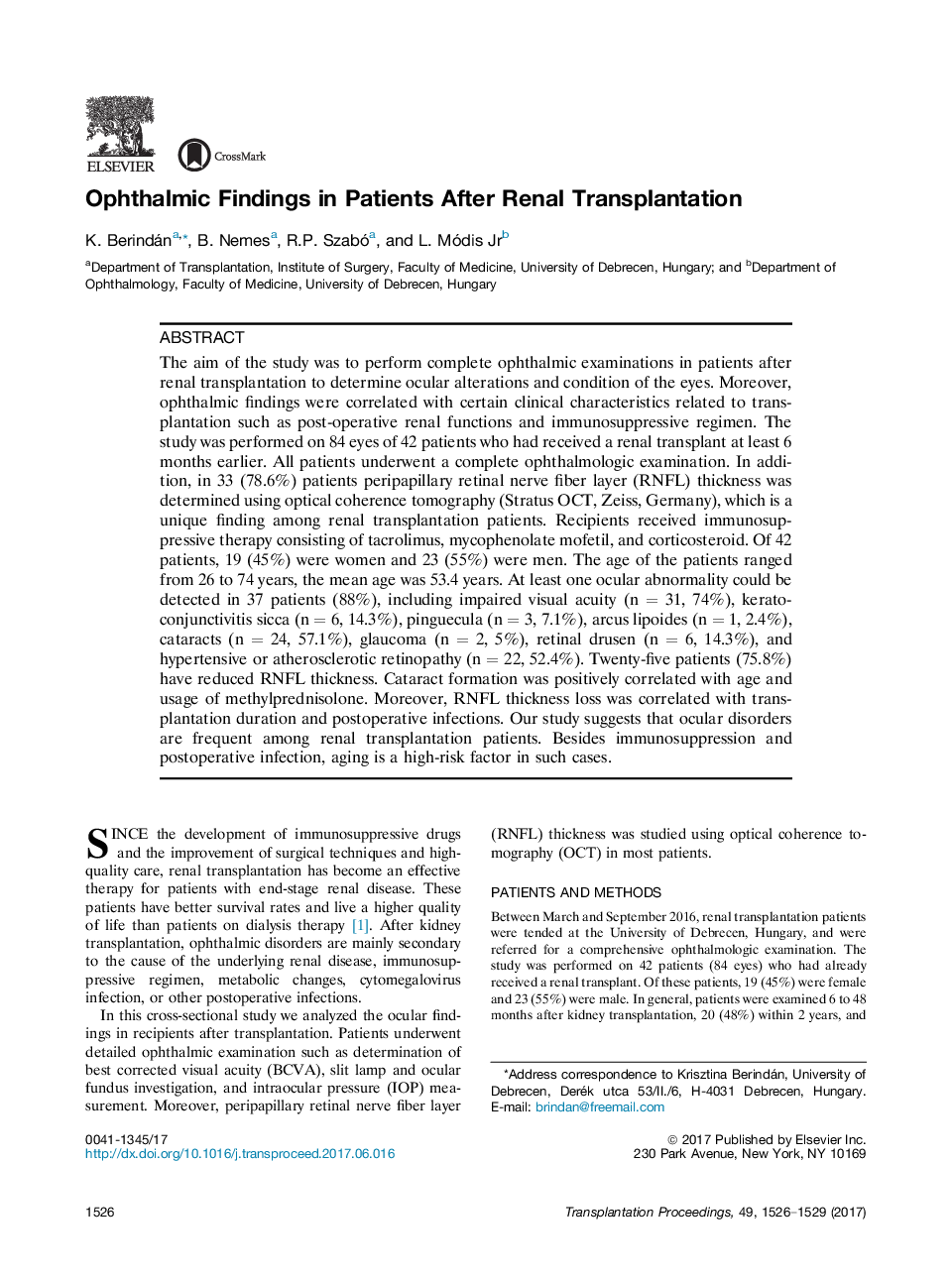| Article ID | Journal | Published Year | Pages | File Type |
|---|---|---|---|---|
| 5728727 | Transplantation Proceedings | 2017 | 4 Pages |
The aim of the study was to perform complete ophthalmic examinations in patients after renal transplantation to determine ocular alterations and condition of the eyes. Moreover, ophthalmic findings were correlated with certain clinical characteristics related to transplantation such as post-operative renal functions and immunosuppressive regimen. The study was performed on 84 eyes of 42 patients who had received a renal transplant at least 6 months earlier. All patients underwent a complete ophthalmologic examination. In addition, in 33 (78.6%) patients peripapillary retinal nerve fiber layer (RNFL) thickness was determined using optical coherence tomography (Stratus OCT, Zeiss, Germany), which is a unique finding among renal transplantation patients. Recipients received immunosuppressive therapy consisting of tacrolimus, mycophenolate mofetil, and corticosteroid. Of 42 patients, 19 (45%) were women and 23 (55%) were men. The age of the patients ranged from 26 to 74 years, the mean age was 53.4 years. At least one ocular abnormality could be detected in 37 patients (88%), including impaired visual acuity (n = 31, 74%), keratoconjunctivitis sicca (n = 6, 14.3%), pinguecula (n = 3, 7.1%), arcus lipoides (n = 1, 2.4%), cataracts (n = 24, 57.1%), glaucoma (n = 2, 5%), retinal drusen (n = 6, 14.3%), and hypertensive or atherosclerotic retinopathy (n = 22, 52.4%). Twenty-five patients (75.8%) have reduced RNFL thickness. Cataract formation was positively correlated with age and usage of methylprednisolone. Moreover, RNFL thickness loss was correlated with transplantation duration and postoperative infections. Our study suggests that ocular disorders are frequent among renal transplantation patients. Besides immunosuppression and postoperative infection, aging is a high-risk factor in such cases.
